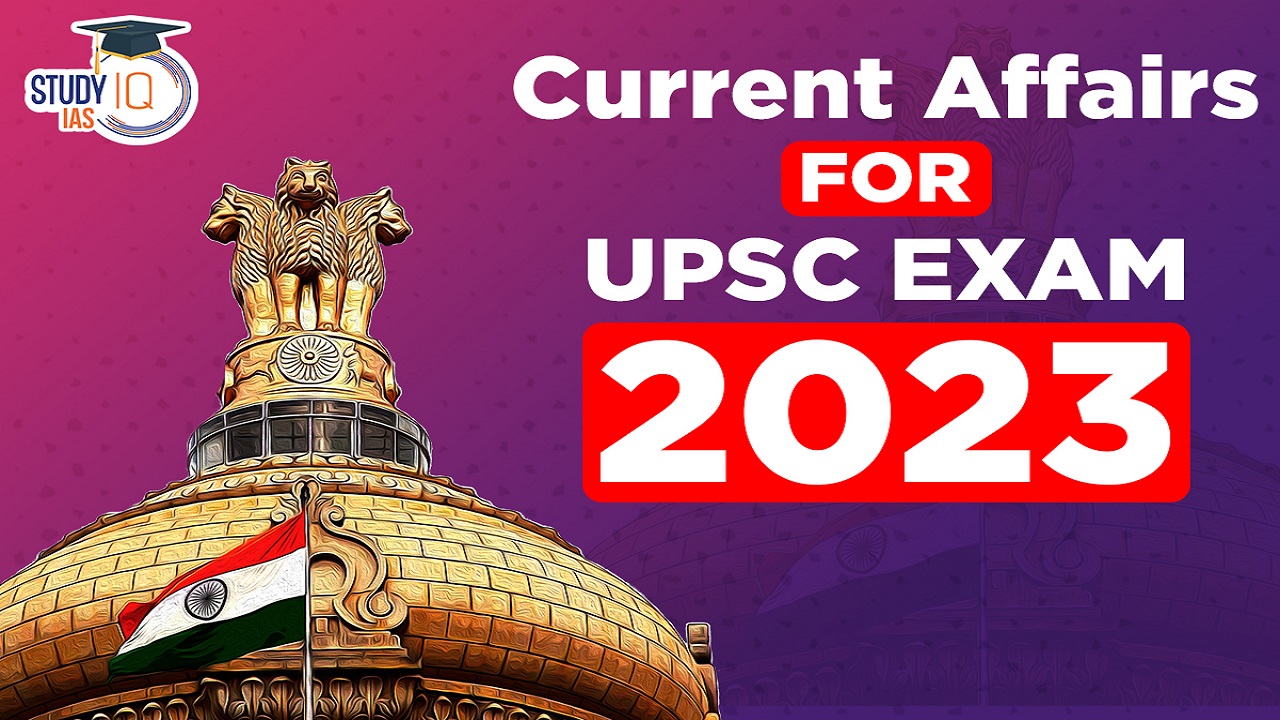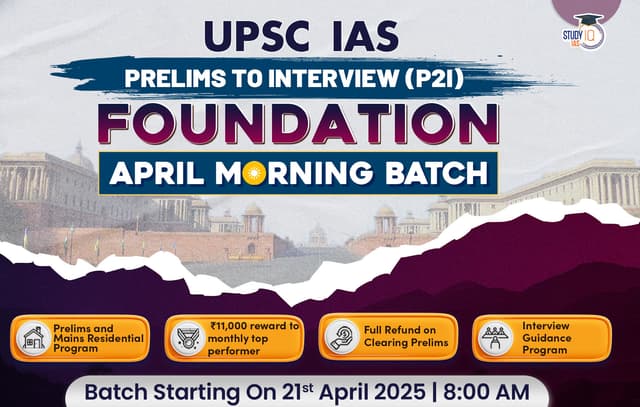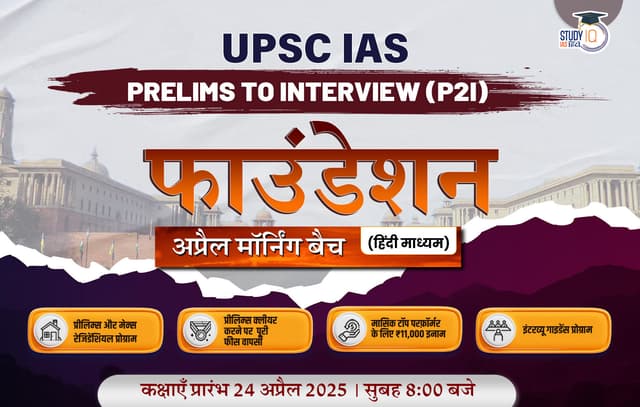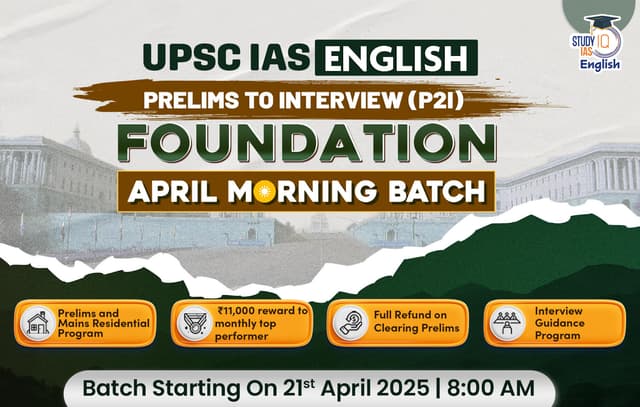Current Affairs 16th May 2023 for UPSC Prelims Exam
Satkosia Wildlife Sanctuary
Context: Satkosia Wildlife Sanctuary of Odisha has witnessed the dwindling of elephant population.
About Satkosia Wildlife Sanctuary:
- Satkosia sanctuary is located in a place where the Mahanadi River passes through a 22 km long gorge in the Eastern Ghats mountains. It was created in 1976.
- The name Satkosia originates from two words; sat meaning seven and kos meaning two miles, indicating the length of the gorge as 14 miles or 22 km.
- Vegetation type: The sanctuary is located in Eastern Highlands moist deciduous forests ecoregion. The major plant varieties are mixed deciduous forests including Sal.
- Fauna: It is known for Gharials, Mugger crocodile and rare freshwater turtles like Chitra indica and Indian softshell turtle.
- Protection: The area was declared as Satkosia Tiger Reserve in 2007, comprising two adjoining wildlife sanctuaries; the Satkosia Gorge sanctuary and Baisipalli sanctuary.
- It is also the 3rd Ramsar site of Odisha.
Current Affairs 15th May 2023 for UPSC Prelims Exam
Transformer, the Engine Behind ChatGPT
Context: A key component of ChatGPT (Chat Generative Pre-Trained Transformer) is the transformer architecture, which revolutionized the world of language processing.
What is Transformer?
- A transformer is a machine learning model architecture that has gained significant popularity in natural language processing (NLP) tasks.
- NLP is a subfield of artificial intelligence (AI) which aims to enable computers to understand, interpret, and generate human language in a way that is meaningful and useful.
- It was introduced in the seminal paper “Attention Is All You Need” by Vaswani et al. in 2017.
- The transformer model revolutionized NLP by achieving state-of-the-art results in various tasks, including machine translation, question answering, text generation, and more.
- The transformer model’s key innovation is the self-attention mechanism, which allows it to capture relationships between words or tokens in a sequence without relying on recurrent neural networks (RNNs) or convolutional neural networks (CNNs).
- This mechanism enables the model to process input sequences in parallel rather than sequentially, making it highly efficient for both training and inference.
- Attention in machine learning allows a model to learn how much importance should be given to different inputs.
- A fascinating aspect of attention-based models is their ability for self-discovery, by parsing a lot of data.
- The transformer architecture has played a significant role in advancing language understanding and generation, making ChatGPT capable of producing contextually relevant and coherent conversational responses.
What are Neural Networks?
- Neural networks, also known as artificial neural networks (ANNs), are a type of machine learning model inspired by the structure and function of biological neural networks in the human brain.
- They are computational models composed of interconnected nodes, called artificial neurons or units, organized in layers.
About ChatGPT?
- ChatGPT (Chat Generative Pre-Trained Transformer) is a large language model launched by OpenAI in November 2022.
- Language models are a type of machine learning model that are trained to generate text.
- It has been trained on a massive corpus of text data, which is believed to be in the range of hundreds of billions of words.
- Technical principle: ChatGPT is based on the GPT-3.5 model, which is one of the largest and most advanced language models currently available.
- Generative Pre-trained Transformer 3 (GPT-3) is an autoregressive language model that uses deep learning neural networks to produce human-like text.
- Applications of ChatGPT:
- Text generation and Summarization: It can be used to generate new text, such as writing new articles, stories, or poetry and to summarize long documents or articles into shorter versions.
- Language Translation: ChatGPT can be used to translate text from one language to another.
- Chatbot: ChatGPT can be integrated into chatbot, which would allow an end-user to interact with the bot in natural language.
- Sentiment Analysis: ChatGPT can be used to analyze the sentiment of a text and classify it as positive, negative or neutral.
Prevention of Money Laundering Act
Context: Recently, Enforcement Directorate (ED) has unearthed properties estimated at ₹457 crore during searches on Santiago Martin and others under the provisions of the Prevention of Money Laundering Act (PMLA), 2002.
About Prevention of Money Laundering Act
- The anti-money laundering legislation was passed by the government in 2002 and came into force on July 1, 2005.
- About Money Laundering: It is the process of converting black money into white money.
- It involves the process of hiding the source of money obtained from illegal sources and converting it into clean money (thereby making it appear to have come from a legitimate source).
- The PMLA was showcased as India’s commitment to the Vienna Convention on combating money laundering, drug trafficking, and countering the financing of terror (CFT).
- The law was aimed at curbing the process of converting illegally earned money into legal cash.
- The Act empowered the Enforcement Directorate (ED) to control money laundering, confiscate property, and punish offenders.
About Enforcement Directorate
- It is a multi-disciplinary organization mandated with investigation of economic crimes and violations of foreign exchange laws.
- It is an executive agency under the Department of Revenue, Ministry of Finance (GoI).
- Functions of ED: It enforces provisions of following laws –
- The Foreign Exchange Management Act, 1999
- The Prevention of Money Laundering Act, 2002
- The Fugitive Economic Offenders Act, 2018
- Role of ED in relation to PMLA, 2002: The ED has been given responsibility to enforce the provisions of the PMLA by conducting investigation.
- To trace the assets derived from proceeds of crime,
- To provisionally attach the property, and
- To ensure prosecution of offenders and confiscation of property by the Special Court.

Aadhaar-Enabled Payment Services (AePS)
Context: Recently, cybecriminal misused Aadhaar-enabled Payment Services (AePS) to siphon money from users’ bank accounts.
About Aadhaar-enabled Payment Services (AePS)
- It is a bank-led model which allows online financial transactions at Point-of-Sale (PoS) and Micro ATMs through the business correspondent of any bank using Aadhaar authentication.
- It removes the need for OTPs, bank account details, and other financial details.
- It allows fund transfers using only the bank name, Aadhaar number, and fingerprint captured during Aadhaar enrolment.
- Objectives of AePS
- The Aeps system enables customers to access Aadhaar-linked bank accounts to do operations like depositing cash, withdrawing money, intrabank or interbank fund transfer, balance inquiry, and obtaining a mini statement.
- It contributes to the Government of India’s and the Reserve Bank of India’s objective of increasing financial inclusion and promoting payment electrification.
- It also makes it easier to disburse cash under different government schemes like NREGA, Social Security pension, Handicapped Old Age Pension, and so on.
- Finally, it attempts to lay a solid framework for Aadhaar-based banking services.
- Requisite for Transaction: It does not require any activation, with the only requirement being that the user’s bank account should be linked with their Aadhaar number.
- AePS Mandatory: Users who wish to receive any benefit or subsidy under schemes notified under section 7 of the Aadhaar Act, have to mandatorily submit their Aadhaar number to the banking service provider.
- Aadhaar is also the preferred method of KYC for banking institutions, thus enabling AePS by default for most bank account holders.
Way to secure Aadhaar Biometric Information
- The UIDAI is proposing an amendment to the Aadhaar (Sharing of Information) Regulations, 2016, which will require entities in possession of an Aadhaar number to not share details unless the Aadhaar numbers have been redacted or blacked out through appropriate means, both in print and electronic form.
- The UIDAI has also implemented a new two-factor authentication mechanism that uses a machine-learning-based security system, combining finger minutiae and finger image capture to check the liveness of a fingerprint.
- Users are also advised to ensure that they lock their Aadhaar information by visiting the UIDAI website or using the mobile app.

Kawal Tiger Reserve
Context: Recently, National Board for Wildlife (NBWL) has granted clearance to divert 21 hectares of forest land in the crucial tiger corridor connecting the Kawal Tiger Reserve in Kagaznagar Division of Telangana.
About Kawal Tiger Reserve
- Kawal Tiger Reserve is located in Northeastern part of Telangana (Old Adilabad district) having Godavari River at one side and Maharashtra border on other side.
- It extends in the districts of Nirmal, Mancherial, Adilabad and KB Asifabad Districts.
- Total Area: 2015.44 Sq Km out of which core Area is 893 Sq.Km.
- Govt of India declared Kawal wildlife sanctuary as Tiger Reserve in 2012.
- Water Source: The primary source of water for this region is the Kadam reservoir.

- This sanctuary is catchment for the rivers Godavari and Kadam, which flow towards the south of the sanctuary.
- The reservoir fills during floods and supplies water to the Godavari throughout the year.
- After the river Godavari passes through the forest, the river renews its water from the various streams that flow through the forest and swells up.
- It is well known for its abundant flora and fauna.
- It houses a wide variety of plant and animal species that include mammals, birds and reptiles.
- The forests consist of dense vegetation/ plantation of Teak, Bamboo, Cassias, Terminalia and Anogeisus trees.
- A large population of Tigers, Gaur, Sambar, Leopards, Wolf, the Barking Deer, Cheetah, Chowsingha, Sloth Bear, Nilgai, Hyena etc. live in the dense forest.
- Crocodiles, Pythons, Cobras, Monitor Lizards and Tortoise are often found near the water body inside the sanctuary.
- It is central Indian Tiger Landscape having – southern Tropical Dry Deciduous Forest.
- It serves as a corridor, connecting the southern forests of Andra Pradesh and the forests of Maharashtra which in turn are connected to the forests in the Vidharba region.
Mandovi River
Context: Goa is opposing Karnataka’s Kalasa-Bandura Nala Project which plans to divert Mandovi river system waters into the Malaprabha River in Karnataka.
About the Mandovi River
- The Mahadayi/Mandovi River, also known as Mhadei river, is described as the lifeline of the Indian state of Goa.
- It is a west-flowing river, and originates in Bhimgad Wildlife Sanctuary (Western Ghats), Belagavi district of Karnataka.
- The Mandovi and the Zuari are the two primary rivers in the state of Goa.
- Mandovi joins with the Zuari at a common creek at Cabo Aguada, forming the Mormugao harbour.
- Panaji, the capital of Goa, is situated on the left bank of the Mandovi.
- The river has its catchment area in three states namely Goa, Karnataka and Maharashtra.
- Dudhsagar Falls and Varapoha Falls are located on the Mandovi River.
About the Kalasa-Banduri Nala Project
- It is undertaken by the Government of Karnataka to improve drinking water supply to the three districts of Belagavi, Dharwad, and Gadag.
- It involves building dams across Kalasa and Banduri, two tributaries of the Mandovi/Mahadayi River to divert water to the Malaprabha river (a tributary of Krishna river) in Karnataka.
- Kalasa-Banduri project was planned in 1989; Goa raised an objection to it.
- The Mahadayi Water Disputes Tribunal was set up in 2010. Goa, Karnataka and Maharashtra are parties to the tribunal.

Kohinoor Diamond
Context: India will launch a diplomatic campaign to reclaim the Kohinoor diamond, which is in the possession of the United Kingdom.
Kohinoor Diamond
- The Kohinoor: The Kohinoor is one of the oldest and most famous diamonds in the world.
- It is believed that the diamond was first mentioned more than 5000 years ago in a Sanskrit script, where it was called the Syamantaka.
- The name of the stone is Persian, meaning ‘Mountain of Light’ and refers to its astounding size.
- The diamond originally weighed 191 carats, but it was recut to 105.6 carats to enhance its fire and brilliance in 1852 by Garrard of London, the royal jeweller.
- This colourless diamond is believed to have been first mined in the 13th century, near Guntur in Andhra Pradesh by the Kakatiya dynasty.
- History: Over the years, the jewel got passed on to the Delhi Sultan Alauddin Khilji and then to the Mughal empire following which Persian invader Nadir Shah took it to Afghanistan.
- Both Babur and his son and successor, Humayun mention in their memoirs the origins of ‘the Diamond of Bābur’.
- Shah Jahan, the fifth Mughal emperor, had the Kohinoor placed into his ornate Peacock Throne.
- Along with the Peacock Throne, Nadir Shah also carried off the Koh-i-Noor to Persia in 1739.
- After the assassination of Nādir Shāh in 1747, the stone came into the hands of his general, Ahmad Shāh Durrānī, who later became the Emir of Afghanistan.
- The Kohinoor passed through different dynasties before reaching Ranjit Singh, the Sikh Maharaja of Punjab, in 1809.
- Ranjit Singh died in 1839. The empire had just begun recovering from the great loss when circumstances forced it into two prolonged wars.
- Upon the defeat of Punjab in the Second Anglo Sikh War, the Last Treaty of Lahore was signed.
- In Article 3 of the treaty, the British demanded the Koh-i-Noor be surrendered to the Queen of England.
- The Diamond, wrested from the Sikhs in terms of the treaty, was entrusted to Dr Login, the British guardian of the Maharaja.
- Governor-General Dalhousie himself travelled to Lahore to receive the Diamond from him and brought it to Bombay. The British Royal family has been in possession of the Kohinoor since then.
- It was set in the platinum crown, which was made for Queen Elizabeth, the wife of King George VI, in the 1930s.
- Distortion of History by British: Till this date, sections of British media just like Britain’s history books state that the Kohinoor was a gift for Britain from India or that “it was handed over to the East India Company”.



 SSC CGL Exam 2025 Apply Online Starts Ap...
SSC CGL Exam 2025 Apply Online Starts Ap...
 Daily Quiz 19 April 2025
Daily Quiz 19 April 2025
 Vehicle-to-Grid (V2G) Technology and its...
Vehicle-to-Grid (V2G) Technology and its...





















